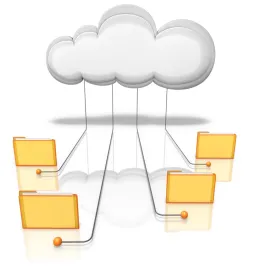Most employers are relying on cloud computing these days. While it may sound like a complex term, cloud computing is really just a way to store and access data and programs over the Internet instead of a computer’s hard drive. If you are using Google Docs, DropBox, or Skype at your office, then you have been in the cloud.
At the most basic level, users should understand that there are different models of cloud services. Software as a Service (SaaS) enables a customer to interact only with the vendor’s software application, but the customer does not manage the system’s infrastructure. Platform as a Service (PaaS) lets a customer host the customer’s software application on a vender’s servers. With PaaS, the customer retains responsibility for the application, but does not manage the hardware or operating systems. Clouds can also have different levels of access. For example, a private cloud may be dedicated to the use of a business only, while a public cloud could allow both employees and clients/customers to access stored programs and content.
Cloud computing has numerous benefits. In the (mostly) bygone era, businesses would have to purchase software licenses and install programs on in-house computer servers. Employees could access the software through a local area network and data was stored directly on the computers and servers. Maintenance costs were high, as hardware replacements, software patches and upgrades were continually required. The cloud has eliminated these problems. In addition to slashing IT costs and the problems associated with the maintenance of servers, the cloud allows applications and data to be remotely accessed. Of course, every great technological advance is accompanied by drawbacks.
The first cloud concern that employers should be aware of is the increased risk of wage and hour claims. The cloud has further enabled employees to work outside the traditional office setting. Of course, laptops, smart phones, and the like long ago broke the brick-and-mortar boundaries for employees. With the cloud, however, access to work-related information has substantially increased. Cloud platforms allow employees to access work email accounts, confidential files, and inter-office memorandums with ease. Remote access means that employees can be working from anywhere, at any hour. For non-exempt employees who must be compensated for all working hours, including overtime, this presents a troubling issue – how does an employer track this compensable work time?
Asking a non-exempt employee to check their email after-hours or to send a document on the weekend may seem harmless, as it could only take a few minutes. Over the course of time, however, these tasks can really add up and, if non-compensated, lead to employee complaints or suits.
Employers should either consider a way to track employees’ out-of-the-office work or institute policies specifying when employees can log into cloud platforms (such as email or Dropbox) for work purposes. Employers must ensure that there is a way for employees to track and report all work hours.
Perhaps more important than what the company policy says (because in a suit, employee testimony will carry more weight than written procedures), employers should consider the work environment that they are promoting. If there is an expectation non-exempt employees be available around the clock, then employers must accept that employees will have off-site, off-the-clock compensable hours. If an employer wants to limit non-exempt employees’ time, then there should be a clear understanding that those employees’ work time is strictly 9-5 (or, whatever the regular working hours may be). BMW made recent headlines when it announced plans to enact policies that would keep workers from being contacted after hours. Similarly, Volkswagen turned off email to certain employees one-half hour after the conclusion of their work days to avoid employee burn-out (and, most likely to limit wage and hour claims). By ensuring that a policy is actually instituted in the work environment, wage and hour claims can be curtailed.



 />i
/>i

